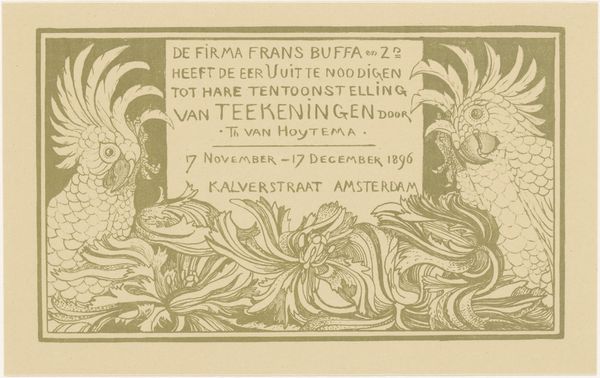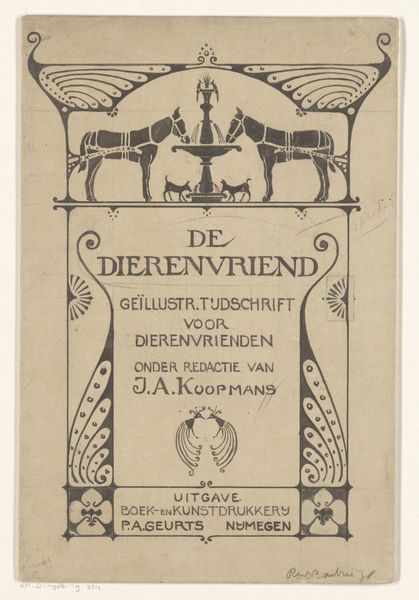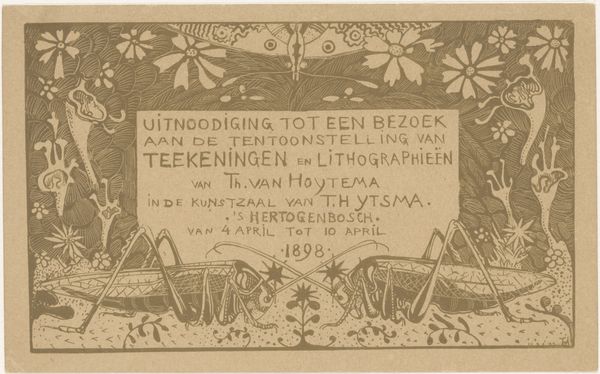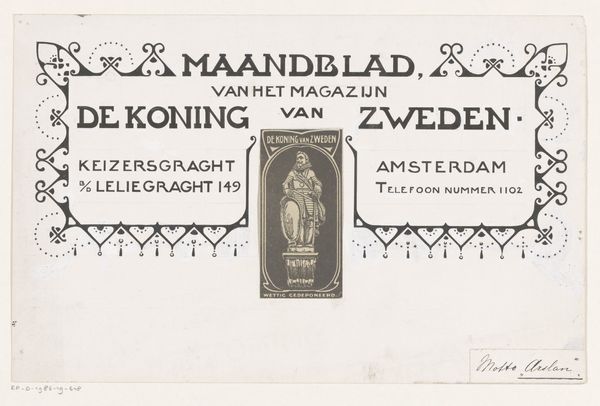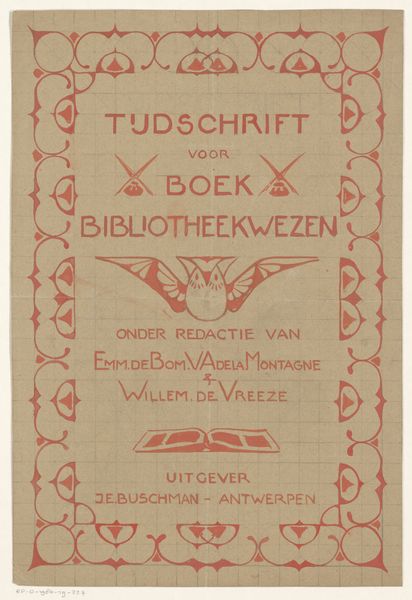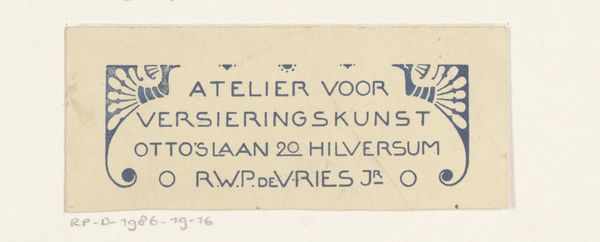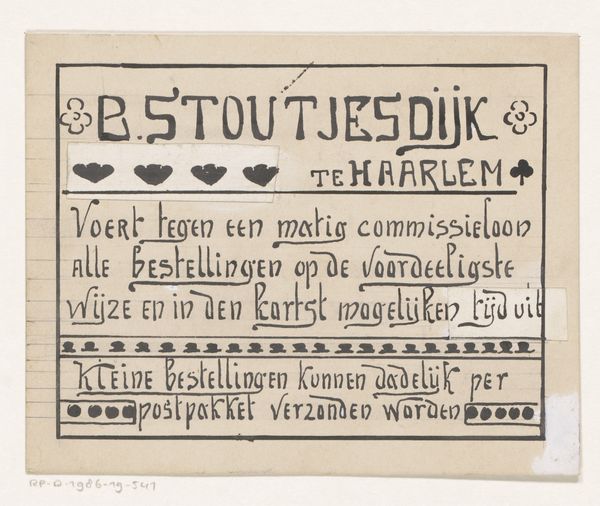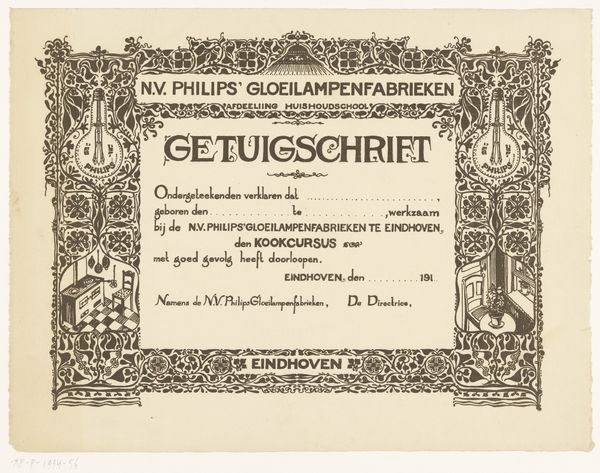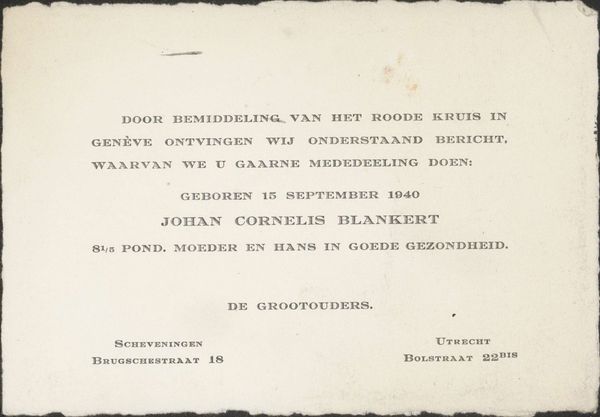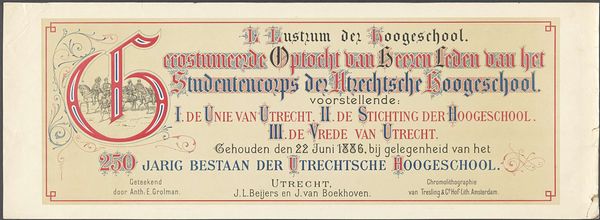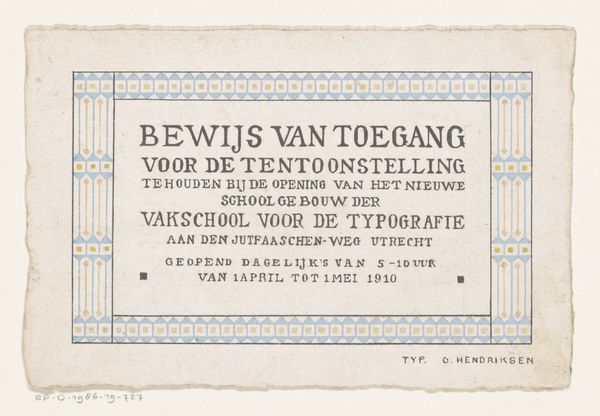
Uitnodigingskaart voor tentoonstelling van meubelen Possibly 1878 - 1910
0:00
0:00
drawing, graphic-art, print, typography, poster
#
drawing
#
graphic-art
#
art-nouveau
#
script typography
#
hand-lettering
# print
#
playful lettering
#
old engraving style
#
hand drawn type
#
hand lettering
#
typography
#
hand-drawn typeface
#
fading type
#
ink colored
#
pen work
#
decorative-art
#
poster
Dimensions: height 110 mm, width 152 mm
Copyright: Rijks Museum: Open Domain
Editor: This is a fascinating print, a decorative invitation card by Theo van Hoytema, probably created sometime between 1878 and 1910. It's announcing a furniture exhibition. What strikes me is the very handmade feel of the lettering and the birds. How do you see this piece functioning within the context of its time? Curator: Considering this invitation card, I’m particularly interested in the relationship between art, craft, and industry represented here. Note that the inscription mentions furniture *made* in a factory but *decorated* by van Hoytema. How does this division of labor, between industrial production and artistic embellishment, reflect the artistic values of the Art Nouveau era, in its approach to material culture? Editor: So it's a conscious attempt to reconcile mass production with artistry? Curator: Precisely. We need to consider the socio-economic context: the rise of industrialization and mass production in the late 19th century. Art Nouveau emerged, in part, as a reaction to the perceived decline in quality and craftsmanship. These types of posters served not just as advertisement, but as examples of the possibilities for integrating artistic sensibility with commercial goods, a vision to influence material culture in a wider context. Are we meant to focus more on "art" or "commerce"? Editor: It feels like both are equally important. This blending suggests that art and industry aren't necessarily opposing forces, or necessarily clearly separate things. Curator: Exactly. How do we define "art" then? And, crucially, who decides what constitutes "good" design and who has access to it? Investigating those factors surrounding artistic creation, reproduction, and reception gives us valuable insight. Editor: That’s given me a lot to think about, particularly how artistic labor interacts with industrial processes, shaping the design and dissemination of art in everyday life. Curator: Indeed. Seeing art through a materialist lens offers a richer understanding of its historical context and social impact.
Comments
No comments
Be the first to comment and join the conversation on the ultimate creative platform.
